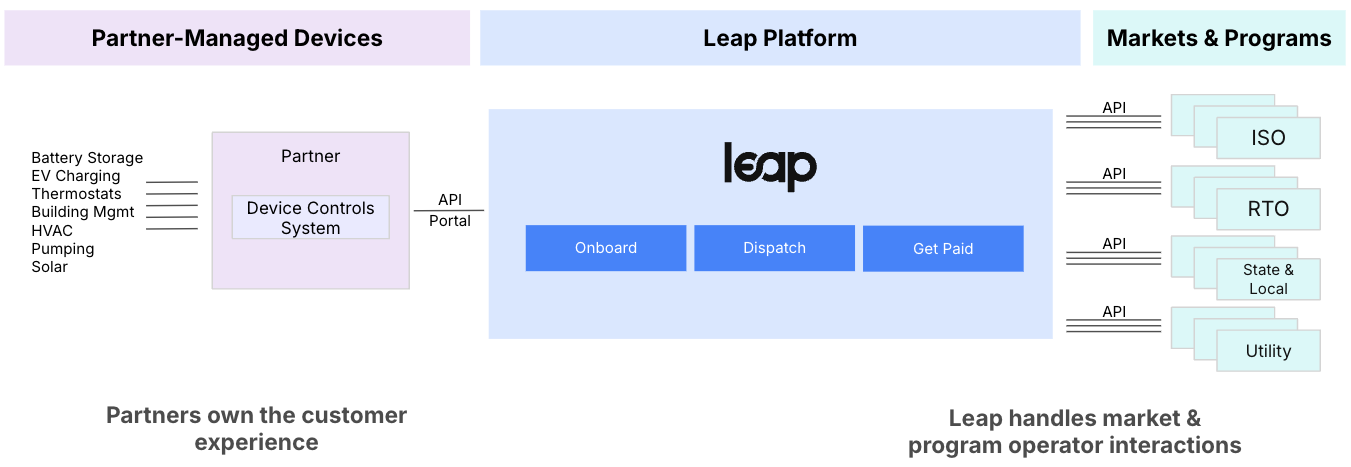Welcome
Automating with Leap's Universal API
Quickly build and scale your Leap-powered grid services operations. Our universal API works across regions and programs enabling seamless enrollment, advanced meter management, automated dispatching and more.
Why Integrate with Leap
Integrate once, scale to all markets & programs.
87%
Increase in $/kW
Integrated partners earn 87% more revenue per kW of nominated capacity by performing better and stacking more programs
7X
Faster Growth
Integrated partners grow revenue 7X faster by scaling across markets and programs while automating operational processes and reducing OpEx
2X
Better Performance
Integrated partners perform 2X better by automating dispatch strategies and eliminating missed dispatches & human processing errors
The Leap Platform
A single point of integration to access all markets and programs. Extensible universal APIs mean partners can easily scale their program operations.

Meter Journey & Automation Use Cases
Meters are the basic units of inventory providing grid services. Meters represent your end customers and the devices sitting behind the utility meter which will enroll in grid services programs to unlock revenue and support the grid by responding to dispatches. Highlighted in the boxes below are the four phases that meters typically follow as they go from enrollment to active participation on the grid and finally to reporting and monetary settlement.
Check out the Automation Use Cases guide for a summary of the use cases that fall under each of these phases as well as the utility meter vs. device program differences.
Onboard
Add meters to the Leap platform for program enrollment
Manage
Sync meter inventory and manage program participation
Transact
Actively participate meters in grid events
Monetize
Assess performance and revenue generated
Recommended Initial Use Cases
While initial use cases can vary depending on your launch goals and target markets/programs, we've outlined recommendations and best practices for where to start in the phasing guides below:
Getting Started
Check out the Getting Started guide on getting up and running quickly and making your first API call directly within your browser through our API Reference documentation.
Updated about 1 month ago